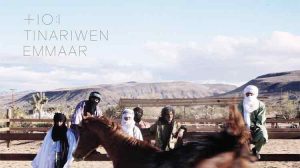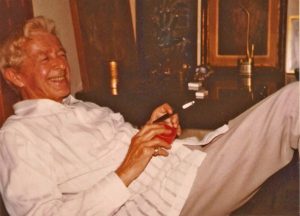As a kid in the 1960s, I remember asking my mom why we didn’t ever have Granny Smith apples in the house. She replied that she refused to buy anything from South Africa because of what the government did to its people. As the years passed and I became more aware of the world around me, I began to understand why my parents refused to buy anything which came from South Africa. However, it wasn’t until the 1980s I first heard the name Nelson Mandela. By the time he had become the rallying point for anti-apartheid activists around the world he had already been in jail more than 20 years. For us living outside South Africa he became more than a man, he was a symbol of all that was wrong with what was a corrupt system.
When he was released and began the slow painful business of trying to rebuild his country he became even more than a symbol, he rose in status to that of almost an icon. While the transition from white majority rule was not without violence, somehow, through force of personality and leadership he was able to make it far more peaceful than anyone could have had a right to expect. After more than fifty years of oppression, South Africans’ anger at their former rulers could have spilled over into horrible acts of vengeance.

Starring Idris Elba as Mandela and Naomie Haris as Winnie Mandela, the movie traces his life from childhood through to his election as the first African president of South Africa. While there are some noticeable gaps in the story (e.g., there’s nothing about how he managed to do the next-to-impossible task of gaining a law degree), the movie does the best it can to show us how he went from being a lawyer to becoming one of the leaders of the African National Congress (ANC) and one of the most-anted men in South Africa.
We also see how he made a mess of his early personal life. His political activism ended his first marriage when his wife became sick of his never being home and his occasional affairs with other women. However, it also shows us how as he became more committed to the cause of working for the freedom of his people, he also began to mature as a person. So when he met his second wife, Winnie Mandela, the relationship was initially far smoother. It helped that Winnie was just as committed to the cause of African freedom as he was, and supported his efforts.
In fact, one of the things I appreciated most about the movie was its depiction of Winnie Mandela. There were a lot of things said about her and her split from her husband in the early 1990s that weren’t exactly pleasant. However, in the movie we see the torments she was subjected to by the South African police while her husband was in jail. We see her being beaten, tossed into solitary confinement for sixteen months and left to wonder what has become of her children. Harris does an amazing job of portraying Winnie’s transformation from a loving wife and fun-loving woman into an angry and vengeful woman who desires only to fight back against those who took her life away from her. As she says to her husband upon one of her rare visits to the Robben Island Prison, “it’s my hate that keeps me going”.

After three years of planting bombs, Mandela and the rest of the ANC leadership were caught and sentenced to life in prison on Robben Island in 1963. While the movie does bog down a bit during his term in prison (how much can you say about the interminable boredom and misery of hard labour and prison life?), it tries its best to give an accurate depiction of the life these men had to endure. Cut off from their families and outside world almost completely, they know almost nothing of what’s happening in the world beyond their walls. While the movie does try to keep us informed, the clips they use aren’t really enough to give us more than a general impression of violence and upheaval. I know the movie is supposed to be a history of the man, not the struggle, but as the two became inseparable in most people’s minds it might have been good to show a little bit more of what was happening while he was in jail.
However, in spite of some minor drawbacks, the movie does a remarkable job of depicting Nelson Mandela as a man and not just an icon. I think a lot of the credit for that must go to Elba, who manages to not only imbue Mandela with the indomitable spirit the world came to recognize and admire, but the humanity few of us ever saw. Elba is shows us how Mandela was able to overcome his personal pain and anger to see the need to create a country where all were treated the same no matter the colour of their skin. It is a remarkable performance, and combined with the work of Harris as Winnie, more than compensates for any weakness in the script.
The Blu-ray edition of the movie (the package I was sent includes Blu-ray, DVD and a code to download a digital version) comes with the usual compliment of special features; director’s (Justin Chadwick) commentary, a making of featurette, and a tribute video gallery. While the latter doesn’t really add much to our knowledge of the Mandela, the featurette has some interesting interviews with Elba, Harris and director Chadwick which tell how they felt about making the movie and the process they each used in its creation.
Nelson Mandela was the face of the fight for freedom in South Africa. Turning that kind of icon into a human being is a nigh on near impossible job. However the movie Mandela: A Long Walk To Freedom comes as close as is probably possible. This is a man around whom the whole world rallied, and this movie helps fill in some of the blanks in the picture we hae of who he was and how he became the revered figure we remember today.





Leave a Reply